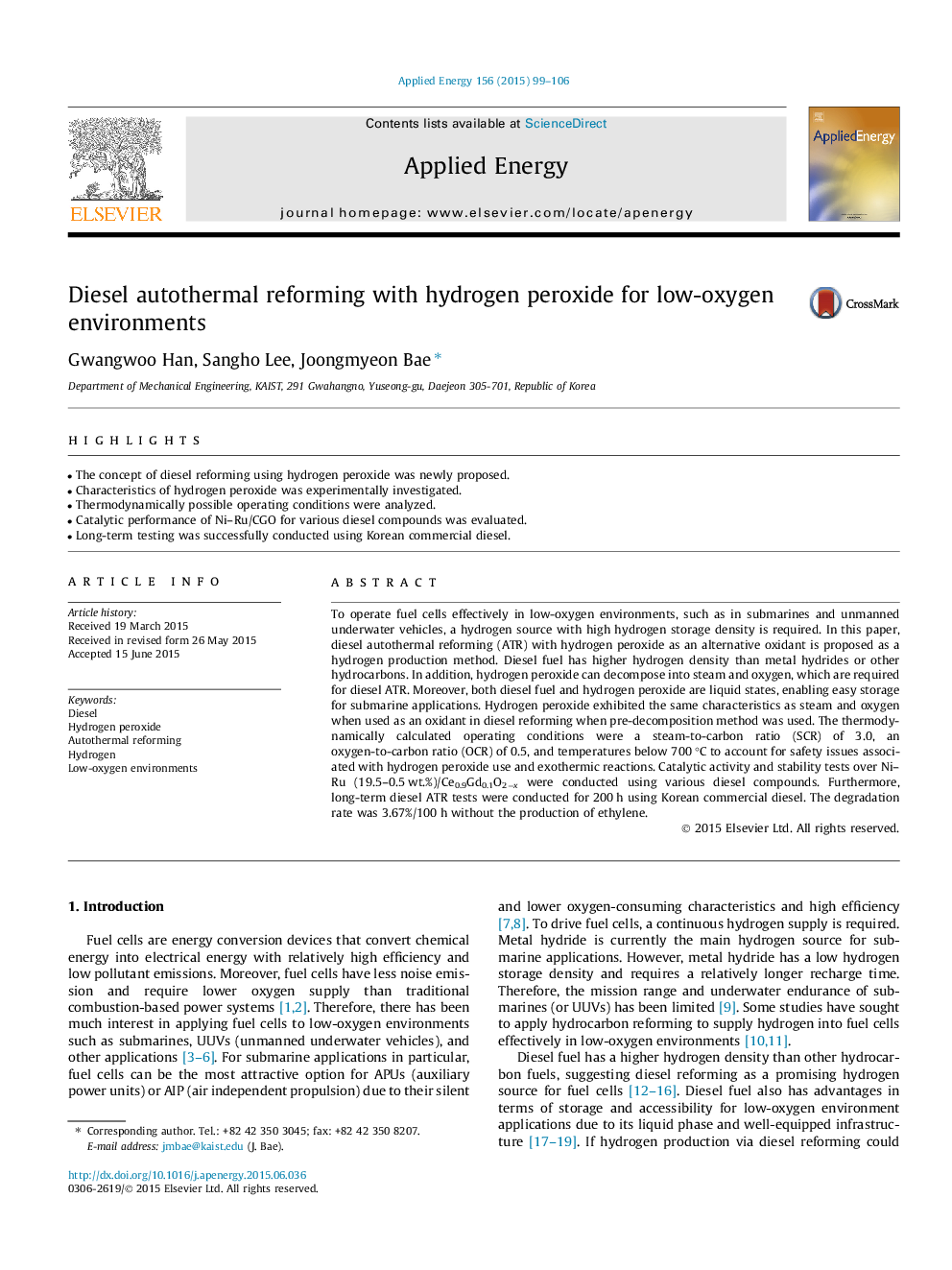| Article ID | Journal | Published Year | Pages | File Type |
|---|---|---|---|---|
| 6686185 | Applied Energy | 2015 | 8 Pages |
Abstract
To operate fuel cells effectively in low-oxygen environments, such as in submarines and unmanned underwater vehicles, a hydrogen source with high hydrogen storage density is required. In this paper, diesel autothermal reforming (ATR) with hydrogen peroxide as an alternative oxidant is proposed as a hydrogen production method. Diesel fuel has higher hydrogen density than metal hydrides or other hydrocarbons. In addition, hydrogen peroxide can decompose into steam and oxygen, which are required for diesel ATR. Moreover, both diesel fuel and hydrogen peroxide are liquid states, enabling easy storage for submarine applications. Hydrogen peroxide exhibited the same characteristics as steam and oxygen when used as an oxidant in diesel reforming when pre-decomposition method was used. The thermodynamically calculated operating conditions were a steam-to-carbon ratio (SCR) of 3.0, an oxygen-to-carbon ratio (OCR) of 0.5, and temperatures below 700 °C to account for safety issues associated with hydrogen peroxide use and exothermic reactions. Catalytic activity and stability tests over Ni-Ru (19.5-0.5 wt.%)/Ce0.9Gd0.1O2âx were conducted using various diesel compounds. Furthermore, long-term diesel ATR tests were conducted for 200 h using Korean commercial diesel. The degradation rate was 3.67%/100 h without the production of ethylene.
Related Topics
Physical Sciences and Engineering
Energy
Energy Engineering and Power Technology
Authors
Gwangwoo Han, Sangho Lee, Joongmyeon Bae,
